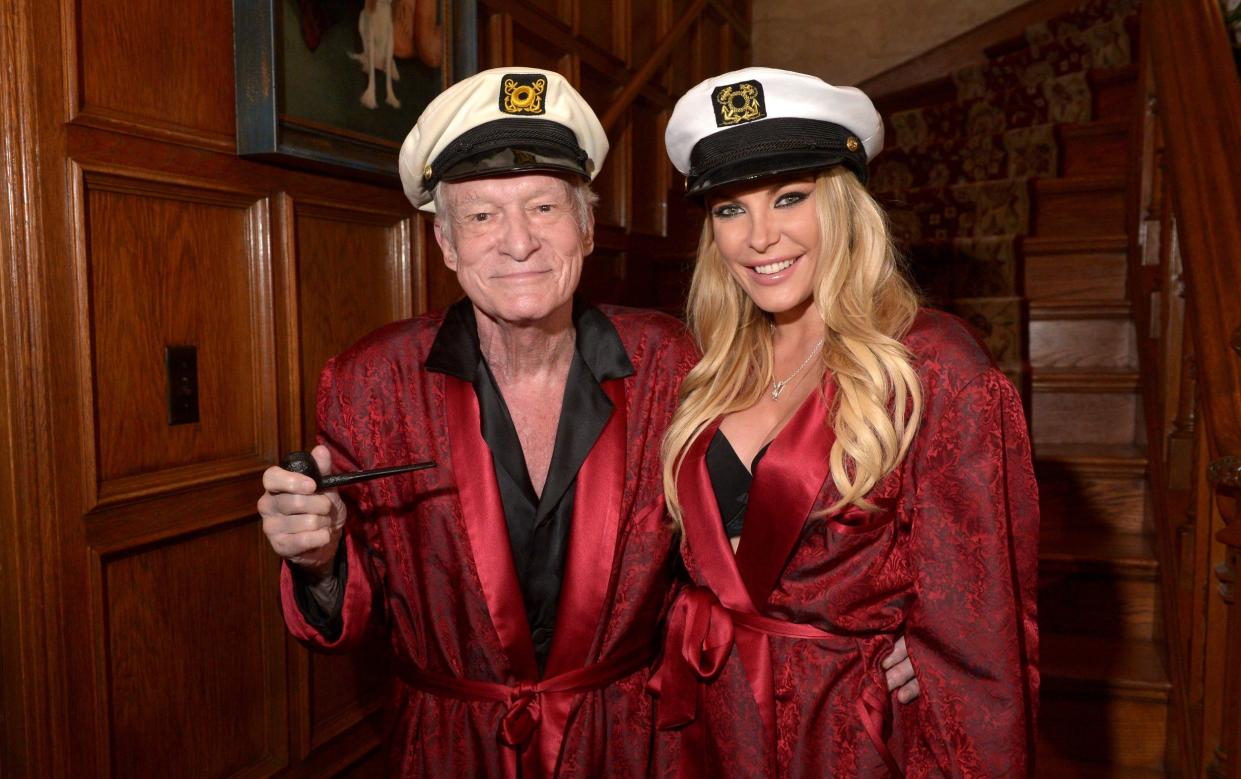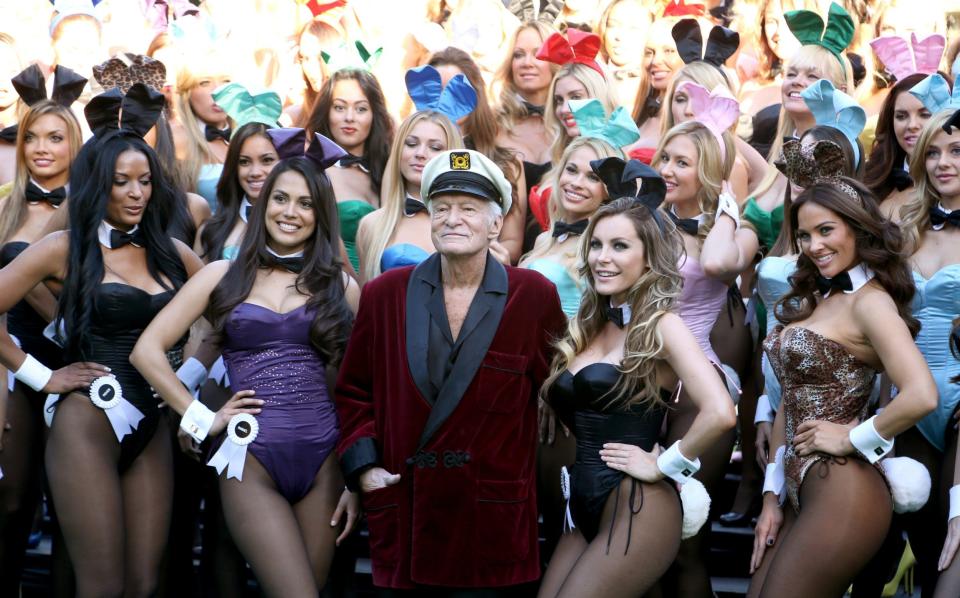Hugh Hefner was a sexual degenerate – and his wife was no innocent

- Oops!Something went wrong.Please try again later.
- Oops!Something went wrong.Please try again later.
I’m not sure what I thought Crystal Hefner, widow of Playboy founder Hugh Hefner, would be doing seven years after the old man’s death. But it makes perfect sense, when you think about it, that it’s selling Bored Ape NFTs, trading cryptocurrency and launching a podcast in which she “explores the realms of health, wellness, love, self-worth and acceptance”. That’s usually the career pipeline of trophy wives or Z-list celebrities nowadays.
But she has also written a book, Only Say Good Things, in which she tells the world “the whole story of the decade I spent at the Playboy Mansion in the orbit of one of the most powerful, controversial, mythical men in the public imagination”. Apparently, she has deemed the already extensive collection of ex-Bunny tell-alls insufficient. The title of the book was a direct request from “Hef” to his wife as he became frail. “I swallowed down every part of me that wanted to say so much more,” Crystal writes, before telling her husband, “I will only say good things, I promise.”
This memoir is her payback: the proverbial middle finger she never gave to her nonagenarian husband, 60 years her senior, when he was shuffling around his harem headquarters in his silk robe. The problem is that Crystal’s account doesn’t vindicate her and the countless other women of the mansion. It doesn’t tell us anything new. An old man who dated a 21-year-old and a set of 18-year-old twins simultaneously was a wrong ’un? Who knew?
The problem throughout is that Crystal tells us stories forgetting that she, for more than a decade, was complicit. Early on, we learn that Hugh arranged for his remains to be buried next to Marilyn Monroe’s, a woman he had never met, who more likely than not hated him for publishing nude photos of her in the first edition of Playboy. Crystal brags (or confesses?) that “I didn’t say a word. If that’s what he wanted, that’s what he would get.”

By now, she was in her 30s, and still too docile to even question why her husband would want to be buried for eternity next to an unsuspecting dead woman. Though she presents herself as a passive participant in the House of Playboy, she is never shy about bending the rules to benefit herself. When collecting fresh young women to take upstairs with Hugh, she would give them his least-favourite colour of pyjamas, to make sure they were less likely to be asked back. She overhauled the “allowance” system, which was, traditionally, going to see Hef every Friday to beg for $1,000, while he judged whether they were worthy of every $100 bill. Crystal worked to do away with this, making it so she was wired the money every week. But only for herself.
Crystal is quick to rebut what she knows will be her readers’ main criticism. If it’s that bad, why not just leave? Though she repeats that she walked into the mansion of her own free will, she spends a large portion of the book explaining why she wasn’t able to get out. She tells us that she is Rapunzel, “and I had climbed into my tower voluntarily”; that she is a “sad Cinderella”, who went from “wanting to get into the ball to a prisoner in the dungeon who couldn’t get out”; and that she is Ariel, “a mermaid princess who wants so badly to belong to a different, sunnier world, she trades her voice for a chance to walk around on human legs and find love”. What Crystal really tells us through her self-infantilisation is exactly what character it takes to enter this world in the first place: a woman who wants to be looked after and not have to worry about anything, whatever the cost.
It would be far more believable that Crystal Hefner wasn’t able to leave the Playboy mansion if she hadn’t done exactly that five days before her wedding to Hugh, when she ran away to live with her boyfriend, the musician Jordan McGraw. Recollections vary as to who begged who to come back after that relationship failed. Reports at the time claim that it was Crystal pleading, but she writes in her memoir that it was Hef who called her mother, who then told her, “Give him another chance, Crystal.”

This is the same woman who was apparently trying to facilitate a meeting between her daughter and an unnamed foreign prince after Crystal left the mansion. “He was calling my mom non-stop and offering her $400,000 if I travelled to see him in his country. The money thrilled my mom, but it felt sinister and dangerous to me. It felt like he was offering to buy me, and maybe he was.”
Hugh Hefner was a shameless sexual degenerate, and the world is a better place without him. But Crystal Hefner knew this, moving into what she herself describes as “the most high-profile, visible modern harem in existence”, and then writing about how she strategically climbed her way to the very top of it. To come out less than a decade later and talk about “survival” is tiresome. She ends Only Say Good Things by claiming that she felt for her husband after 10 years just as “someone might love their kidnapper after 10 years of being with them every day”. It would all be far more tolerable if, to this day, she didn’t keep his surname, and her title as the president of the Hugh M Hefner Foundation.
Only Say Good Things is published by Ebury at £22. To order your copy for £18.99, call 0844 871 1514 or visit Telegraph Books

